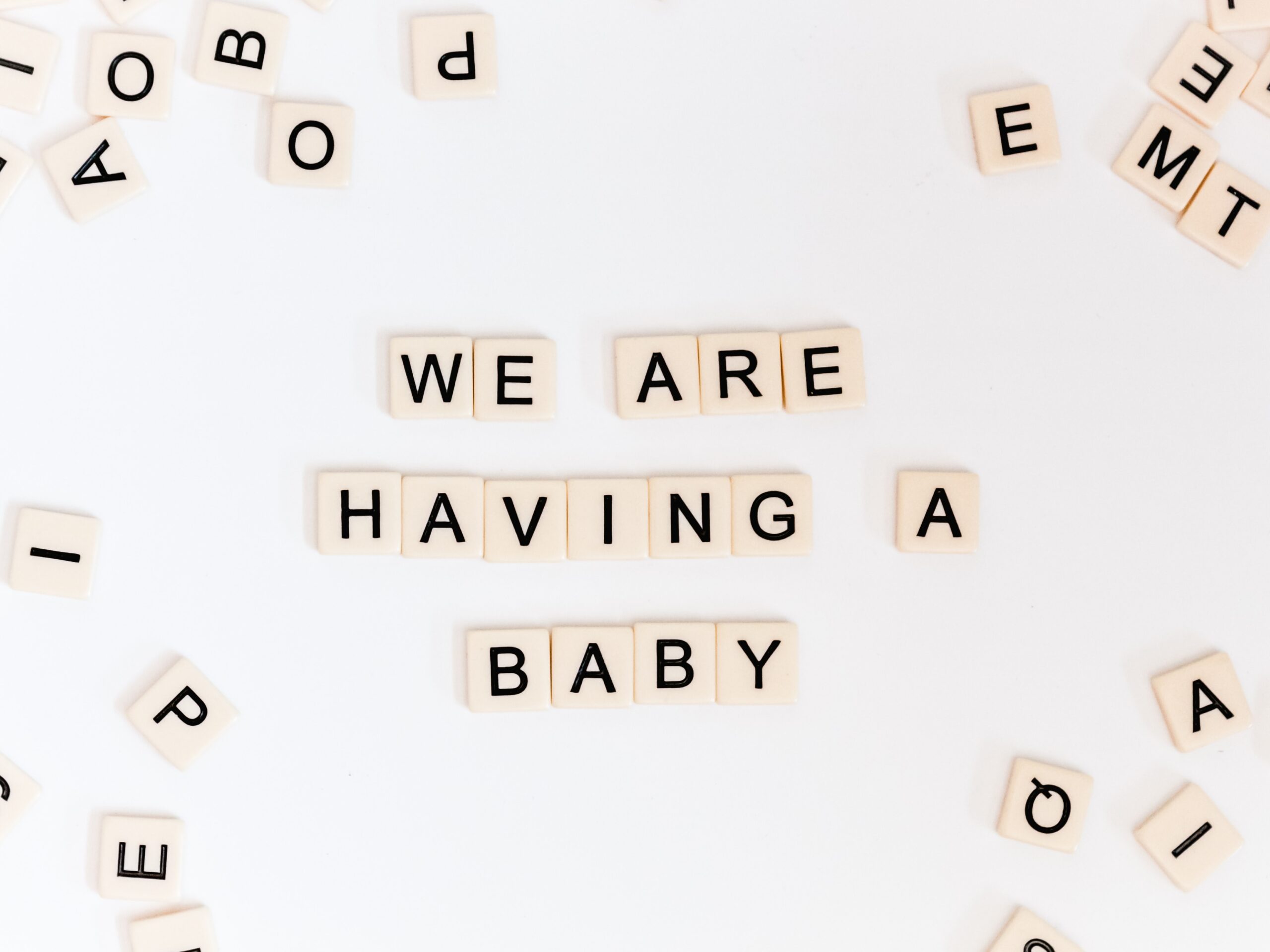Understanding the Benefits of Baby Sign Language
Are you interested in finding new ways to enhance communication with your pre-verbal baby? Look no further than baby sign language. This article explores the benefits of introducing baby sign language to your little one, helping them express their needs and wants before they can even speak. With its potential to strengthen the parent-child bond and provide a bridge between two worlds, baby sign language is an invaluable tool for early communication development. Whether you’re a new parent or simply curious about this unique form of communication, read on to discover the incredible advantages that baby sign language can offer.

What is Baby Sign Language?
Definition
Baby Sign Language is a communication method that uses hand movements or signs to help babies and toddlers communicate their needs, desires, and thoughts before they are able to speak verbally. It is a visual language that can be used alongside spoken language to enhance communication between parents and their pre-verbal children.
Origins
Baby Sign Language originated from American Sign Language (ASL), which is used by the hearing-impaired community to communicate. In the 1980s, researchers discovered that babies have the ability to understand and acquire sign language before they can speak. This led to the development of Baby Sign Language as a means to bridge the communication gap between babies and their parents.
How it Works
The basic premise of Baby Sign Language is to teach babies and toddlers commonly used signs that represent everyday objects, actions, or concepts. By consistently using these signs in daily interactions, parents can help their children understand and express themselves more effectively. Babies can start learning signs as early as six months old, as this is when they begin to develop the motor skills necessary for signing.
Benefits of Baby Sign Language
Enhanced Communication
One of the major benefits of Baby Sign Language is enhanced communication between parents and their babies. By using signs, babies can express their needs, wants, and observations, even before they can form words. This can reduce frustration and tantrums, as babies are able to communicate their needs more effectively.
Reduced Frustration
Babies often become frustrated when they cannot effectively communicate their desires or needs. Baby Sign Language can help reduce this frustration by giving babies a tool to express themselves. When babies can use signs to indicate hunger, thirst, or tiredness, they are less likely to resort to crying or other forms of distress.
Earlier Communication
Baby Sign Language allows babies to communicate earlier than they would with spoken language alone. As babies begin to learn signs, parents are able to understand their baby’s wants and needs, which enhances their bond and reduces confusion. Babies as young as eight months old can begin using signs to communicate simple concepts, such as “more” or “eat.”
Improved Vocabulary
By introducing signs for different objects and actions, Baby Sign Language can also improve a baby’s vocabulary skills. Babies can learn the signs for common words such as “milk,” “book,” or “play,” and associate those signs with the actual objects or activities. This early exposure to language can facilitate the development of spoken language later on.
Strengthened Bond with Parents
Using Baby Sign Language promotes a stronger bond between babies and their parents. The shared experience of learning and using signs creates a deeper connection and understanding between parents and their babies. The ability to communicate effectively from an early age helps build trust and fosters a loving and supportive relationship.
How to Start Baby Sign Language
Start Early
To reap the maximum benefits of Baby Sign Language, it is recommended to start early, ideally around six months of age. At this stage, babies are starting to develop the motor skills necessary to make simple signs, and their brain is primed for language development. The earlier you start, the more time you have to establish a consistent signing routine.
Focus on Basic Signs
When starting Baby Sign Language, it’s important to focus on teaching your baby basic signs that are relevant to their everyday life. Signs like “eat,” “drink,” “sleep,” and “more” are highly useful and can be easily incorporated into daily routines. As your baby becomes familiar with these signs, you can gradually introduce more complex ones.
Be Consistent
Consistency is key when teaching Baby Sign Language. Use the signs consistently and frequently in everyday situations, such as during mealtime or playtime. By consistently using the signs, your baby will begin to associate the signs with the corresponding actions or objects, making the learning process more effective.
Use Visual Cues
To support your baby’s learning, use visual cues along with the signs. For example, when teaching the sign for “eat,” you can simultaneously show your baby a spoon or piece of food. This visual association will help reinforce the meaning of the sign and aid in your baby’s comprehension.
Involve the Whole Family
To create a supportive learning environment, involve the whole family in teaching Baby Sign Language. Encourage siblings, grandparents, and other caregivers to learn and use the signs with your baby. This inclusivity not only reinforces the signs but also strengthens the bond between your baby and their family members.
Common Signs to Start With
Mom and Dad
Teaching the signs for “mom” and “dad” can help your baby identify and communicate with their parents. By associating specific signs with each parent, your baby can communicate their desires or needs more effectively, strengthening the bond between parent and child.
More
The sign for “more” is a versatile and useful sign to start with. It allows babies to express a desire for more food, drink, or playtime. Teaching this sign early on can help reduce frustration and provide your baby with a simple way to communicate their desires.
All Done
The sign for “all done” is another important sign that helps babies communicate when they have finished eating, playing, or any other activity. By learning this sign, babies can indicate that they are ready to move on or that they have had enough of a particular activity.
Eat
Teaching your baby the sign for “eat” can help them express their hunger. This sign is particularly useful during mealtime, as babies can use it to indicate that they want to eat or that they are still hungry.
Drink
Similar to the sign for “eat,” teaching the sign for “drink” allows babies to communicate their thirst. This sign is beneficial during feeding times or whenever your baby wants a drink of water or milk.
Sleep
The sign for “sleep” can be helpful when your baby is tired or ready for a nap. By teaching this sign, you give your baby a way to communicate their need for rest without resorting to crying or fussiness.
Play
The sign for “play” is a great way for babies to express their desire for playtime. By using this sign, babies can make it clear that they want to engage in fun activities and interact with their parents or siblings.
Book
Introducing the sign for “book” can foster a love for reading and language in your baby. By associating this sign with storytime, babies can express their interest in reading and request their favorite books.
Diaper
The sign for “diaper” is particularly useful during diaper changes. By teaching your baby this sign, they can indicate when they need a diaper change, making the process more efficient and reducing discomfort.
Bath
The sign for “bath” allows babies to communicate their desire for a bath. By using this sign, babies can indicate when they want to have a bath, making bath time a more enjoyable and less stressful experience for both the baby and parent.

Tips for Teaching Baby Sign Language
Make it Fun
When teaching Baby Sign Language, make it a fun and enjoyable experience for both you and your baby. Use playful expressions, engaging gestures, and animated voices to capture your baby’s attention and create a positive learning environment.
Use Real-life Contexts
To help your baby understand the meaning of the signs, use them in real-life situations. For example, use the sign for “eat” during mealtime or the sign for “play” during playtime. Applying the signs in relevant contexts helps your baby associate the signs with their intended meaning.
Repeat and Reinforce
Repetition is key in teaching Baby Sign Language. Repeat the signs frequently throughout the day to reinforce their meaning and help your baby remember them. Use the signs consistently and encourage your baby to imitate the signs whenever appropriate.
Give Positive Feedback
When your baby makes an effort to use a sign, provide positive feedback and encouragement. Praise your baby for attempting to communicate and respond to their signs with enthusiasm. This positive reinforcement reinforces their motivation to continue using signs.
Start with Simple Signs
Begin with simple signs that are easy for your baby to grasp. Signs like “more,” “eat,” and “drink” are a good starting point. As your baby becomes more comfortable with these signs, gradually introduce more complex signs, expanding their vocabulary and language skills.
Follow your Baby’s Lead
Every baby develops at their own pace, so follow your baby’s cues and interests when teaching Baby Sign Language. If your baby shows a particular interest in a certain sign or object, focus on teaching that sign and incorporating it into your daily interactions.
Challenges of Baby Sign Language
Misinterpretation
One challenge of Baby Sign Language is the potential for misinterpretation. Babies may not perform signs accurately or consistently, which can lead to confusion in communication. It’s important to be patient and understanding, allowing room for error as your baby learns and refines their signing skills.
Resistance to Signs
Some babies may initially resist using signs or show little interest in learning them. It’s important to remain patient and consistent, offering gentle encouragement and positive reinforcement. Gradually, most babies will begin to embrace and use signs as they become more comfortable with the communication method.
Delayed Speech Development
There is a misconception that Baby Sign Language may delay speech development. However, research has shown that introducing signs to babies does not hinder their spoken language acquisition. In fact, Baby Sign Language can even promote a stronger foundation for verbal language skills, as it fosters early communication and a greater understanding of language concepts.

Popular Baby Sign Language Resources
Books
There are several books available that provide guidance and resources for teaching Baby Sign Language. “Baby Sign Language Made Easy” by Lane Rebelo and “Baby Signs: A Baby-Sized Introduction to Speaking with Sign Language” by Joy Allen are highly recommended books for parents interested in learning more about Baby Sign Language.
Videos
Online videos can be a valuable resource for learning and teaching Baby Sign Language. Websites like YouTube and educational platforms such as BabySigns.com offer a range of instructional videos demonstrating various signs and techniques.
Apps
In the digital age, several mobile applications are available for teaching Baby Sign Language. Apps like “Baby Sign and Learn” and “TinyTalk – Baby Sign Language” offer interactive features, games, and resources to facilitate learning and communication with your baby.
Success Stories from Parents
Increased Communication
Many parents who have incorporated Baby Sign Language into their daily routines have reported a significant increase in communication with their babies. By using signs, parents and babies are better able to understand each other’s needs and desires, resulting in fewer tantrums and a more harmonious parent-child relationship.
Early Vocabulary Development
The use of Baby Sign Language has been shown to have a positive effect on early vocabulary development. Babies who are exposed to signs regularly tend to have a larger vocabulary at an earlier age compared to babies who are not exposed to signing. This early exposure to language sets a strong foundation for future language development.
Positive Parent-Child Relationship
Parents who use Baby Sign Language often report a stronger bond with their babies. The shared experience of learning and using signs creates a unique connection and a deeper level of understanding. By effectively communicating with their babies, parents are able to meet their needs more effectively, resulting in a positive and nurturing parent-child relationship.
Debunking Baby Sign Language Myths
Delays Speech Development
Contrary to a common misconception, Baby Sign Language does not delay speech development in babies. Research has shown that babies who use signs alongside spoken language actually tend to develop speech earlier and have a larger vocabulary. Baby Sign Language can be seen as a tool that supports and enhances the development of verbal language skills.
Replaces Verbal Language
Another myth is that Baby Sign Language replaces verbal language. In reality, Baby Sign Language is intended to be used alongside spoken language to enhance communication. The signs serve as a bridge for babies to express themselves before they have fully developed their verbal skills. As babies become more proficient in spoken language, they naturally transition away from using signs as their primary means of communication.
Only for Hearing Impaired Babies
Although Baby Sign Language was initially used by the hearing-impaired community, it has proven to be beneficial for all babies, regardless of their hearing ability. Baby Sign Language is a visual communication method that appeals to the natural abilities of babies to learn and imitate signs. It can be successfully implemented with hearing babies to enhance early communication and language development.
Conclusion
Baby Sign Language is a valuable tool for enhancing communication between parents and their pre-verbal babies. By incorporating signs into daily interactions, parents can provide their babies with a means to express their needs, wants, and observations. The benefits of Baby Sign Language, including enhanced communication, reduced frustration, and the development of early language skills, make it a compelling method for parents seeking to strengthen their bond with their babies and foster early communication. With patience, consistency, and a supportive learning environment, Baby Sign Language can empower both parents and babies in their communication journey.




